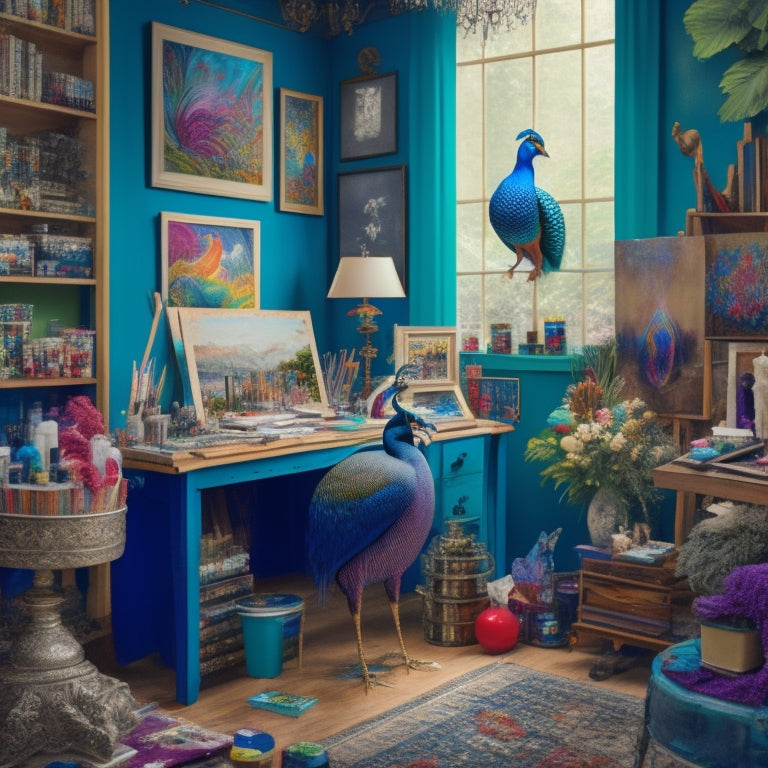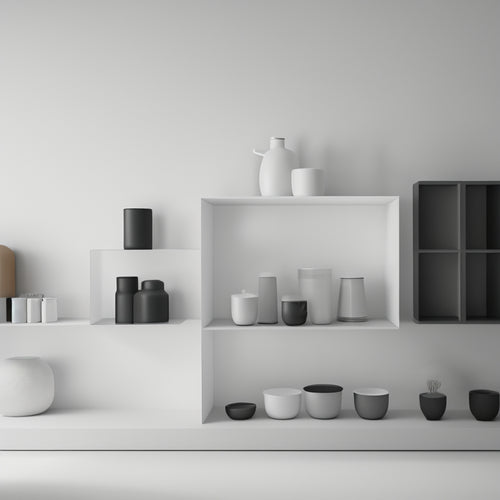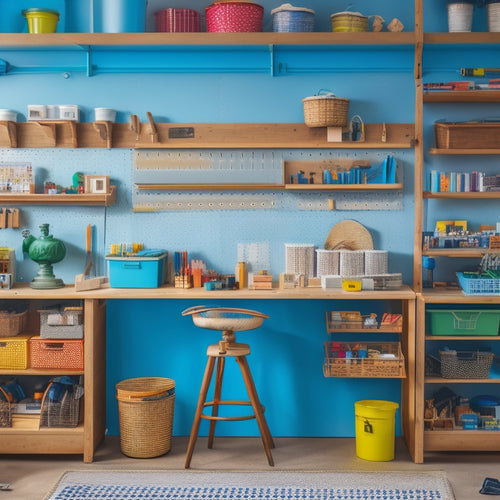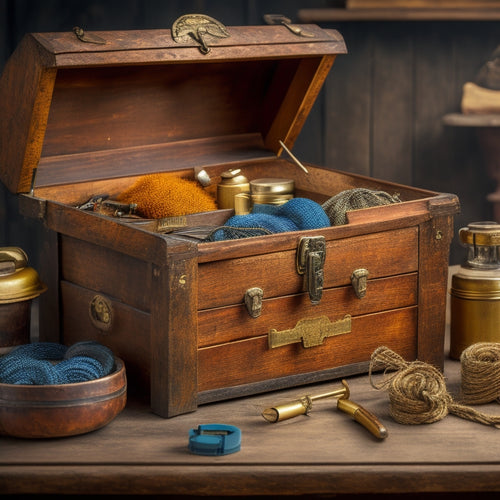
Art Blog: Erika Lancaster - Mastering Creative Techniques
Share
You're about to reveal the secrets of mastering creative techniques, where artistic growth lies at the intersection of deliberate practice, technical skill, and organized creativity. To master shading techniques, you'll focus on advanced blending, intricate textures, and combining techniques for subtle shifts between values. Drawing fundamentals, such as perspective and proportional sketching, will establish a strong foundation. By investing in quality tools and practicing essential sketching exercises, you'll build a habit and refine your skills. As you develop your artistic abilities, you'll prioritize improving technique and organize your supplies for focused creativity. With dedication, you'll soon uncover the nuances of creative mastery.
Key Takeaways
• Master advanced shading techniques like hatching, cross-hatching, and stippling to create intricate textures and subtle value shifts.
• Develop artistic skills by deliberately focusing on observation, drawing, and shading abilities, and dedicating time to technique mastery.
• Organize art supplies with a functional system, maintaining a well-organized workspace for focused creativity and maximizing vertical storage.
• Experiment with different tools and materials to achieve unique effects and discover strengths and weaknesses of each technique.
• Prioritize consistent practice and dedication to refine skills and achieve significant artistic growth.
Mastering Shading Techniques
By understanding the fundamental principles of various shading techniques, including hatching, cross-hatching, contour lines, weaving, and stippling, you can effectively create a range of values and textures in your drawings.
To take your shading skills to the next level, focus on advanced blending and intricate textures. Practice combining techniques to achieve subtle shifts between values. For instance, use cross-hatching to create soft, gradient-like changes, and stippling to achieve detailed, high-contrast textures.
Experiment with different tools and materials to discover unique textures and effects. Remember, mastering shading techniques requires patience, practice, and attention to detail. With consistent effort, you'll be able to create rich, nuanced drawings that showcase your artistic skills.
Exploring Drawing Fundamentals
You'll find that establishing a strong foundation in drawing fundamentals is essential to creating successful artworks, as it allows you to effectively communicate your artistic vision.
By mastering perspective drawing, you'll be able to create a sense of depth and distance in your artworks.
Proportional sketching is also vital, as it enables you to accurately capture the relationships between different elements in your composition.
Additionally, experimenting with line variation can add expressiveness and emotion to your drawings.
Furthermore, learning techniques for texture creation can help you convey the tactile qualities of your subjects.
Essential Sketching Tips
Mastering the fundamentals of drawing sets the stage for refining your sketching skills. Now it's crucial to focus on developing good habits and strategies that will elevate your artistic practice.
As a beginner, it's important to start with quick studies and smaller sketches to build consistency. Invest in the right tools, such as a Strathmore Sketchbook and Drawing Pencils, to guarantee quality results.
Practice beginner sketching exercises like shading simple geometric shapes and scribbling for natural hand movement in organic elements. Set aside time each day to sketch, even if it's just for a few minutes, to make it a habit.
With consistent practice and the right tools, you'll be well on your way to refining your sketching skills.
Building Artistic Skills
Your artistic skills are shaped by the techniques you practice, and refining them demands a deliberate focus on developing your observation, drawing, and shading abilities. To build your artistic skills, you must prioritize improving your technique. This involves dedicating time to mastering various shading techniques, such as hatching, cross-hatching, and stippling.
It's essential to understand the strengths and weaknesses of each technique to apply them effectively. As you practice, you'll notice improvements in your artistic development. Consistency is key, so set aside time each day to refine your skills. With persistence and dedication, you'll see significant growth in your artistic abilities, leading to more confident and expressive creations.
Organizing Art Supplies
As you refine your artistic skills through consistent practice, a cluttered workspace can hinder your creative flow, making it imperative to establish a functional system for organizing your art supplies.
A well-organized workspace allows you to focus on your craft, rather than wasting time searching for misplaced supplies. To achieve efficient storage, start by purging unnecessary items and separating them into trash and donation piles.
Utilize household items as containers for storage, ensuring visibility and avoiding overcrowding.
Designate areas for works in progress, using shelving and bins to protect delicate projects.
Maximize vertical storage by installing shelves and pegboards.
Implement creative solutions, such as using plastic shoe boxes and containers, to group similar supplies together.
Enhancing Observation Skills
By deliberately slowing down your drawing process, you can train your eyes to capture the subtleties of form, texture, and value, ultimately refining your observation skills.
This attention to detail is essential in still life and portrait drawing, where accuracy is key to creating a realistic representation.
As you slow down, focus on the relationships between shapes, the way light falls on your subject, and the textures that make it unique.
Practice observing the world around you, studying the intricate details of everyday objects.
Developing Creative Habits
Establishing a consistent creative routine is essential to cultivating artistic growth, and it begins with dedicating a specific time and space for sketching and drawing. By setting aside a daily routine, you'll be more likely to tap into your creative inspiration and explore new artistic possibilities.
To develop this habit, try the following:
-
Start small, committing to just 10-15 minutes of sketching or drawing per day
-
Create a conducive environment, free from distractions and interruptions
-
Make it a mindful practice, focusing on the process rather than the outcome
- Experiment with different techniques and mediums to keep your creative spark alive
Frequently Asked Questions
How Do I Overcome Creative Blocks and Stay Motivated?
Like a rusty engine, your creative juices can stall, but you can refuel by practicing mindfulness exercises to clarify your thoughts and teaming up with an accountability partner to stay on track and motivated.
Can I Use Digital Tools to Improve My Traditional Art Skills?
You can leverage digital tools to enhance your traditional art skills by exploring digital brushes that mimic traditional media and experimenting with art software to refine your techniques and expand your creative possibilities.
What's the Best Way to Price and Sell My Artwork Online?
Crafting a convincing online commerce strategy, you'll carefully calculate art valuation, considering factors like materials, time, and demand, to confidently price your pieces on online marketplaces, ensuring a profitable and professional digital art debut.
How Do I Balance Art Practice With a Busy Work or Family Schedule?
To balance art practice with a busy schedule, you'll need to prioritize your time, setting realistic goals and allocating specific slots for art, work, and family commitments, ensuring a harmonious blend of responsibilities and creative pursuits.
Should I Specialize in One Style or Experiment With Multiple Techniques?
You're torn between specializing in one style or experimenting with multiple techniques. To develop your artistic identity, try both: master a style to establish a foundation, then evolve through experimentation, allowing your unique voice to emerge.
Related Posts
-

Small Shelving Options for Tight Spaces
You're surrounded by tight spaces in your home, and you need clever shelving solutions that optimize storage without ...
-

Creative Workshop Storage Solutions and Ideas
You can revolutionize your workshop's storage by maximizing vertical space with wall-mounted racks, utilizing hidden ...
-

What Are the Advantages of a Wooden Tool Box
You choose a wooden tool box, you're not only getting a reliable storage solution, but also a long list of benefits t...


